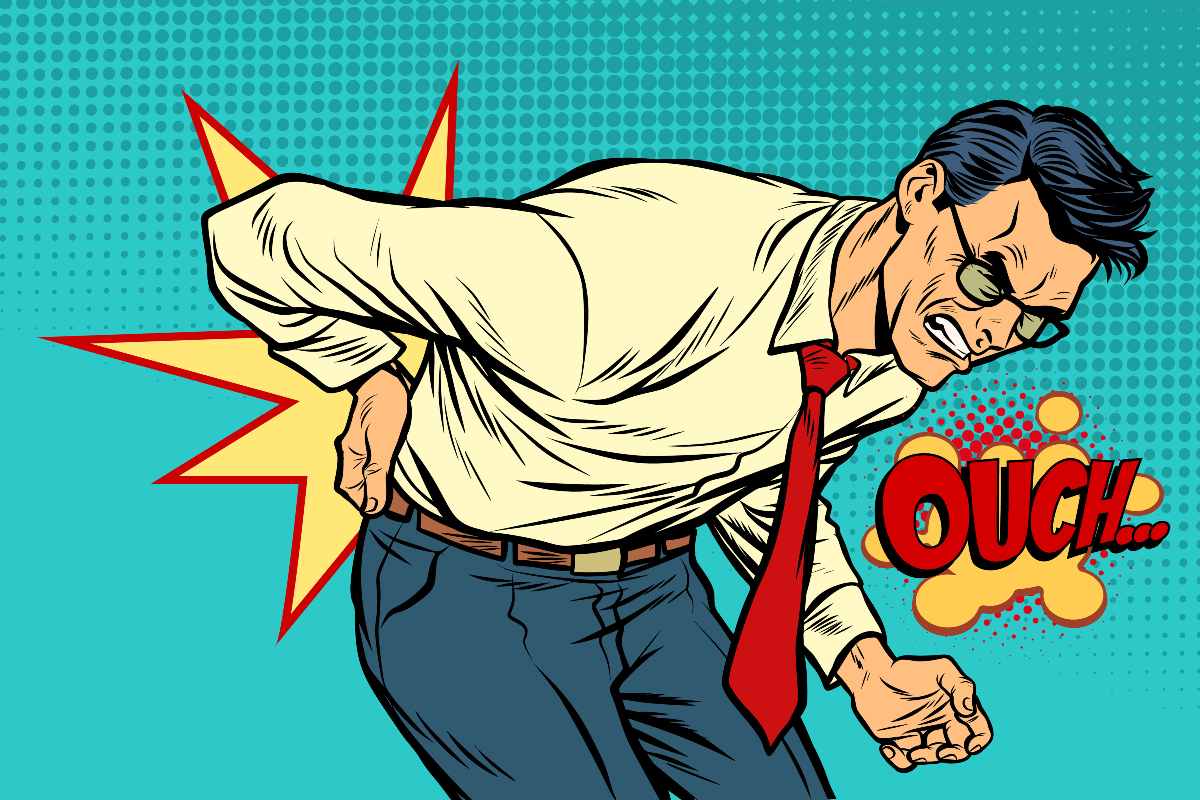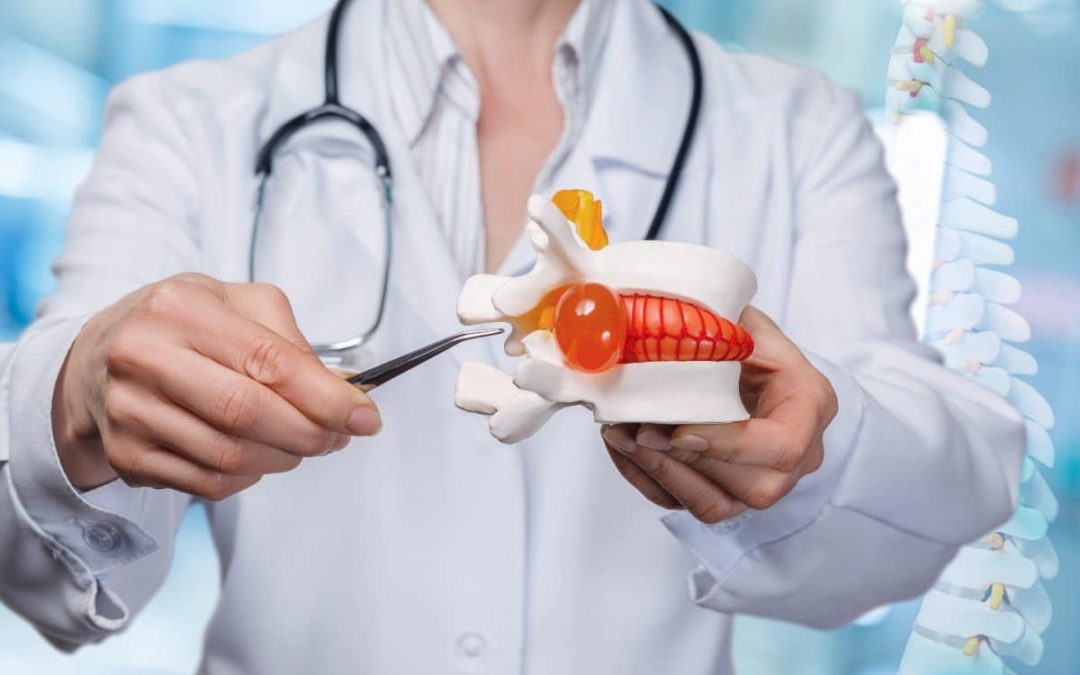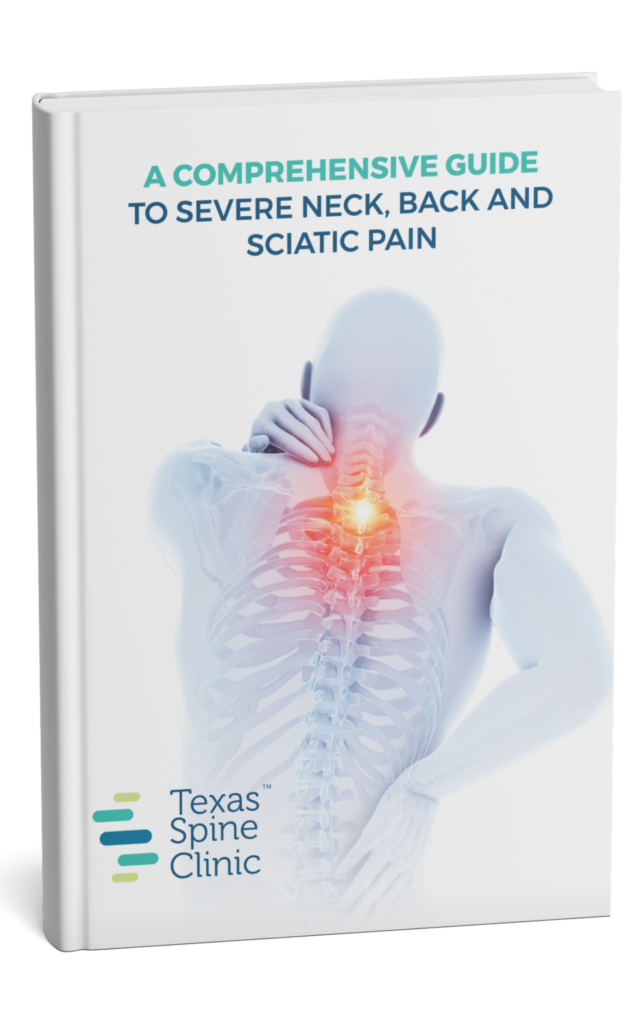For better or worse, physical pain — from back and joint pain to headaches, muscle aches, and everything else — is a part of life. On one hand, pain is our bodies’ way of communicating that something is wrong and needs attention. On the other hand, too much pain can backfire, causing further health issues like depression and anxiety.
Back pain caused by spinal stenosis is no exception to this. Over time, your body experiences the natural wear and tear of life, which you can easily see in the form of age (liver) spots on your skin. However, the spine can degenerate too, and one of the most common conditions people experience as they age is spinal stenosis.
Depending on the severity of the stenosis, non-surgical treatments can be effective at managing the pain. But the question remains:
How can I tell if my back pain is from spinal stenosis — or just general back pain?
Let’s talk about the definition of spinal stenosis, its causes and symptoms, and the recommended treatment options you can discuss with your doctor.
What is Spinal Stenosis?
Spinal stenosis is the narrowing of the spinal canal. That’s the hollow channel running from the highest neck bone in your body to your sacrum. The spinal column cradles your spinal cord, the thin tube of nerve tissue that connects your brain to the rest of your body’s nerves. Like a plant’s root system, thin tendrils called nerve roots protrude from the spinal cord and they are critical to movement and feeling.
When your spinal canal narrows, significant problems can occur. It puts increasing pressure on the spinal cord and adjacent nerve roots. This can cause tingling and numbness in various parts of the body, make it difficult to walk, and even create bowel and bladder issues.
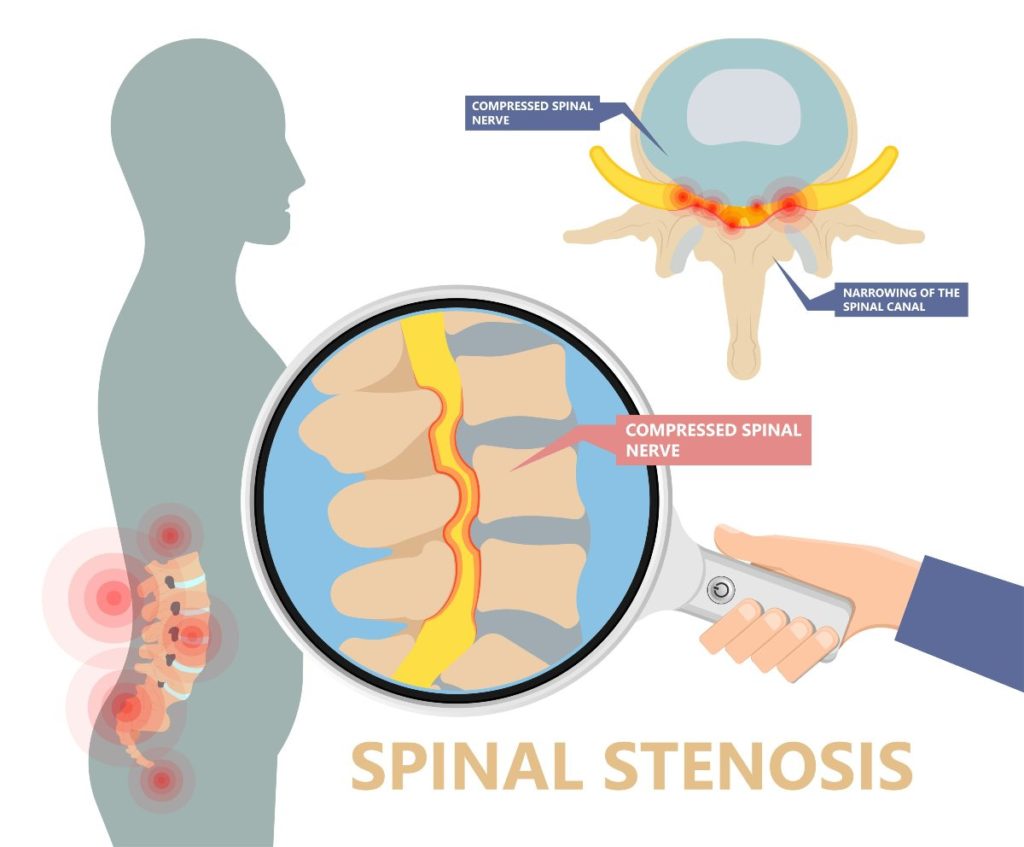
Symptoms of Spinal Stenosis
Spinal stenosis can result from many factors, but they all share very similar symptoms. Depending on your condition, those can include:
- Numbness or tingling in the arm or legs
- Weakness in your arms, legs, or feet
- Gradual to sudden clumsiness
- A loss of coordination
- Difficulty walking
- Loss of bowel and bladder control
- Lower back pain
- Neck pain
In most cases, symptoms start slowly and gradually worsen over time. The difficult thing is the symptoms at first can be so minimal, most patients overlook them and the condition progresses without them knowing. Once the stenosis is identified, it can often be surprising to the doctor and the patient how severe the condition has become given the mild nature of the symptoms.
What Causes Spinal Stenosis?
As there is no cure for spinal stenosis, early detection, and treatment of the root cause can provide significant pain relief and improve symptoms. While spinal stenosis is most common in older patients due to general aging of the spine, the condition can be genetic, and can be spurred by certain injuries, or conditions.
Common causes of spinal stenosis include:
- Congenital stenosis (those born with a narrow spinal canal)
- Spondylolisthesis (a vertebra slips forward)
- Scoliosis (a sideways curvature of the spine)
- Injuries, surgery, and trauma to the spine
- Osteoarthritis (which causes bone spurs)
- Bulging or herniated discs
- Spinal tumors
The slow and mild symptom onset can make spinal stenosis difficult to diagnose. At Texas Spine Clinic, we leave no stone unturned to make sure you have the correct diagnosis and treatment plan. This may include a physical examination, a CT scan or an MRI.
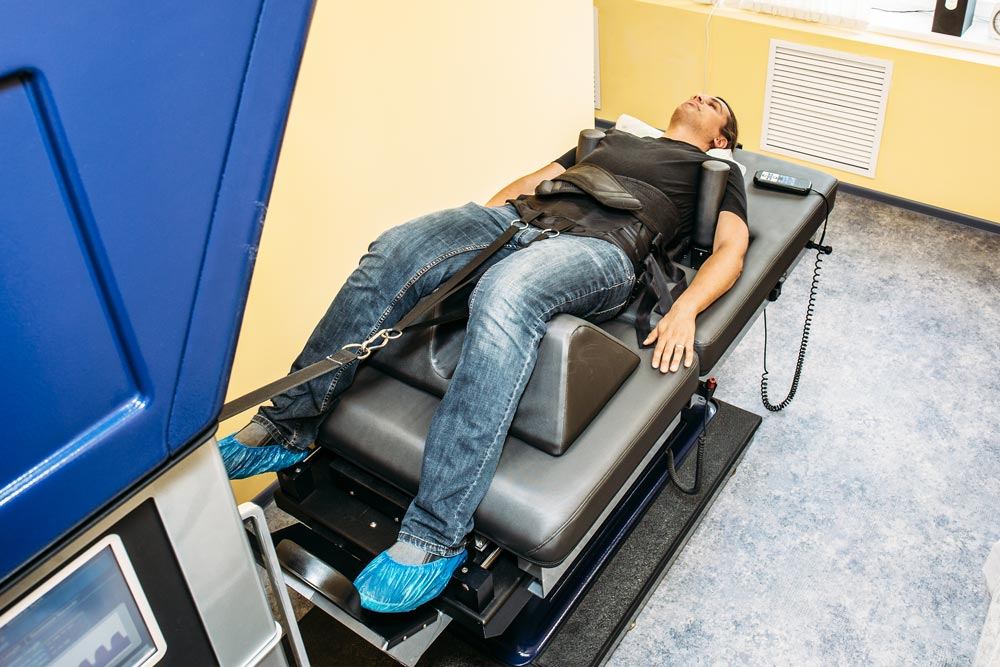
The DRX9000 machine can be an effective treatment for spinal stenosis.
Nonsurgical Treatment Options for Spinal Stenosis
Your doctor may recommend a variety of treatments depending on the degree of your condition. Severe stenosis can require surgery if the stenosis is severe enough to cause damage to the spinal cord or nerves in the lower spine.
Treatments we commonly recommend to patients include:
- Steroid Injections. Epidural steroid injections are commonly used to provide long-term pain relief. These injections consist of an anti-inflammatory steroid and sometimes a local anesthetic and can last for many months, depending on your condition.
- DRX9000. In some cases of disc herniation, spondylolisthesis and less severe stenosis, non-surgical decompression can be effective at reducing the pain associated with stenosis by gently stretching the spine to reduce pressure on the disc and adjacent nerves allowing these structures to heal with time.
- Medication. Because spinal stenosis is currently incurable, your doctor may prescribe pain management medications, such as NSAIDs and opioids (on a case-by-case basis). You may even be prescribed antidepressants to manage the mental health issues associated with chronic pain.
- Physical Therapy. The natural reaction to back pain is to lessen physical activity because you think it might worsen your symptoms. However, a physical therapist can help teach you exercises that strengthen your back muscles and actually lessen your pain by increasing your flexibility.
- Correcting Posture. Learning how to sit and stand correctly can help ease your pain. In addition to teaching you strengthening exercises, your physical therapist can show you how to care for your spine by simply positioning it correctly.
- Permanent Lifestyle Changes. Weight can play a role in the severity of pain, so your doctor may prescribe exercise, weight loss, and more to lessen the strain on your spine.
- Facet Blocks. Facet blocks are similar to epidural steroid injections in that they contain a corticosteroid and an anesthetic. However, they are inserted in a different section of the spine, depending on the location of the pinched nerve in question.
- Radiofrequency Ablation. Your doctor might also recommend radiofrequency ablation, which is the ablating or “burning” off part of your nerve. This stops pain signals from reaching your brain by removing the nerve completely. Pain relief from this lasts for a year on average.
You Can Successfully Find Relief from Your Back Pain
You don’t have to live your life in pain. Surgery isn’t the only option for spinal stenosis, and you may have many non-surgical treatments available, based upon the severity of the stenosis and associated symptoms.
Texas Spine Clinic is committed to providing our community the care they deserve. If you are hurting and think you might have spinal stenosis, call 210-741-9166 contact us for a risk-free consultation today. You are in control of your pain — don’t let it control you.

